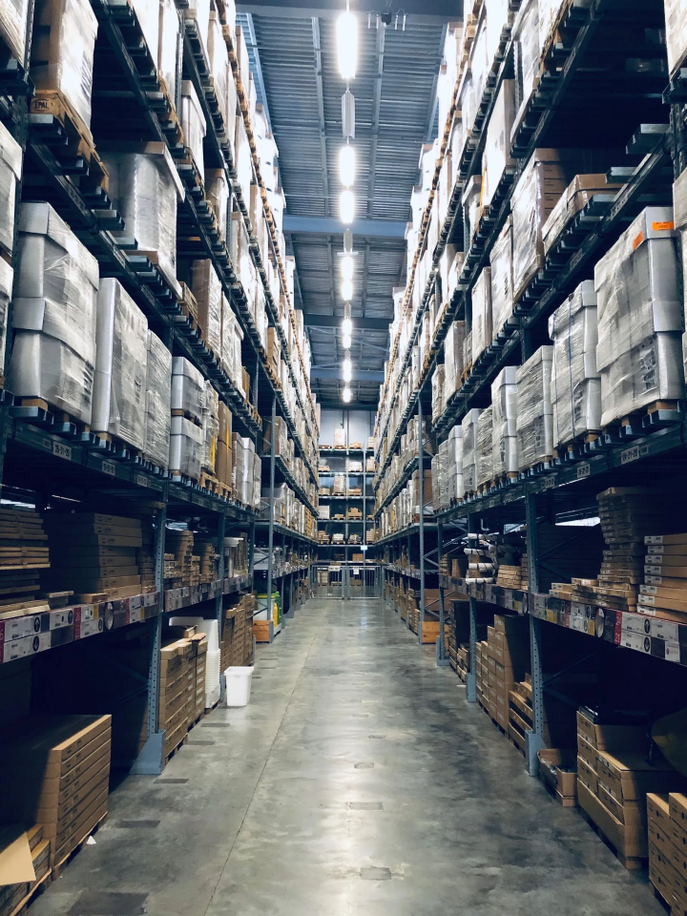The ABC of Logistics Companies by Cargosnap
Whether you’re a logistics pro or a beginner, keeping up with the logistics terminology can be a bit challenging. Swiftly navigating between specific terms, acronyms and synonyms is not always easy, especially if you don’t know where to look. But having a good understanding of this lingo is important to make informed decisions.
For example, when choosing a tool for improving your logistics processes, such as Cargosnap, you need to be aware of the language used to fully understand its benefits and make the best decision for your business.
To help you with that, here is a glossary of logistics and supply chain terminology you can encounter in your day-to-day logistics operations. If you like staying up to date with the newest terms, bookmark this page and return to it as it is periodically updated.

PL (First-Party Logistics): a company or individual that handles logistics operations using their own equipment to store and transport goods.
2PL (Second-Party Logistics): a company responsible for transporting goods for a delivery purpose, for example, an airline, a car carrier, or a shipping line.
3PL (Third-Party Logistics): third-party logistics services providers, such as warehousing, inventory management, fulfillment, and distribution. 3PL can be convenient as it allows
companies to focus on their core business by handling logistics operations.
API (Application Programming Interface): an IT technology that allows applications with different codes and external systems to communicate and exchange data with each other. APIs are usually cloud-based and can be used to integrate the functionality of multiple applications within one system.
Barcode scanner (also barcode reader):
an electronic device that captures and decodes information in a barcode and sends it to a computer.

B/L (Bill of Lading): legal document between a carrier and a shipper providing all the necessary information on the goods being carried, such as type, quantity, origin, and destination. B/L is a crucial document that determines ownership and responsibility for the carriage of the goods, along with details for invoicing and payment.
Bulk cargo: unpackaged goods loaded directly into a means of transport and shipped in large quantities. For example, coal, oil, and grains.
Cargo: goods transported by land, water, or air, for commercial purposes. Cargo can be loaded in containers or shipped unpackaged on board a vehicle (e.g., in bulk).
Cargo claim (or freight, shipping, or transportation claim): a legal demand for financial reimbursement given by a carrier if the cargo has been damaged or lost.
Carrier: a person or a company licensed to transport goods from one point to another.

Container (or freight container, ocean container): a highly specialized and standardized metal box built according to ISO 6346 specifications for standardization.
Containers store and handle goods that need to be moved using transport, usually by truck, rail, or vessel. A container is rigid, completely sealable, and suitable for repeated and continuous use.
Container number: a reference number of four letters and seven numbers assigned to a container under the ISO 6346 specifications to identify it internationally. A container number can be easily scanned with OCR tools and applications, such as CargoSnap.
Contract logistics: long-term collaboration between a company and a third-party logistics provider.
CPU (Customer pick-up): a shipping method that enables the customer to pick up the order by their own means.
Crane:
a tall machine equipped with cables, chains, and pulleys used for lifting and lowering heavy objects, usually in construction sites.
Cross-docking:
the logistics practice of directly transferring goods from inbound to outbound transport. Cross-docking eliminates or decreases unnecessary handling and storage time.
Customs:
a government authority at the frontier, port, or airport that controls the flow of goods incoming and leaving a country.
End-to-end supply chain visibility: transparency of all cargo movements from the point of origin to the end destination. It includes tracking, reporting, and managing at all stages across supply chain operations.
ERP (Enterprise Resource Planning):
an approach that enables a company to manage its flow of information effectively from one place, including logistics, operations, and finances.
Exporter: a person or company who sends goods abroad with the intention of trade.
Forklift (lift truck, forklift truck, and fork truck): a powered industrial vehicle equipped with a forked platform at the front used to lift and move cargo.

High-bay warehouse: a warehouse with racks with a height of 12 meters to a maximum of 50 meters. A high-bay warehouse offers the advantage of extreme operating efficiency and very high storage density: from a few thousand to hundreds of thousands of pallet spaces. It can be fully automated, but manually operated systems are also possible.
Importer: a person or company who receives or brings goods into a country from abroad with the intention of trade.
Inbound logistics: the process of receiving goods into a company. This refers to the transportation, storage, and management of incoming goods.
ISO (International Organization for Standardization): an organization responsible for developing and publishing standards for various kinds of measurements internationally. For example, an ISO container is a container that is manufactured by the ISO standards.
Loading: placing goods onto a mode of transportation to be transported by land, air, or water.
Loading-bay (also loading dock): an area of a warehouse built to facilitate the loading and unloading of goods from trucks and other vehicles.
Manufacturer: a person or company that turns raw materials into finished goods for the purpose of sale.
Multi-purpose vessel: a versatile ship built to carry and handle a wide range of cargoes (e.g., bulk cargo).
OS&D (Over, Short, and Damaged): a report filed by the receiver of a shipment in which the goods are damaged or received in an incorrect quantity.
Outbound logistics: the process of goods leaving a facility. This can refer to the movement of non-finished goods to another processor or warehouse and the fulfillment and distribution of final goods to an end-user.
Pallet: a wooden, plastic, or metal platform used for moving, loading, storing, or stacking goods.
PoC (Proof of Condition): a set of best practices for gathering visual records for freight and equipment at defined points through their lifecycles. This visual evidence is a combination of pictures or videos, unique reference numbers, inalterable timestamps, and geographic coordinates.

Port: a maritime facility equipped for handling and processing cargo. A port that is away from the sea is called an inland terminal or dry port. Inland terminals are used for handling and storing cargo and containers that were received in a port and needed to be transshipped.
Product inspection: a process that involves checking and examining that the goods that are being manufactured meet the correct quality, quantity, and specifications. A product inspection can be carried out at any stage of the manufacturing process: before the production (pre-production inspection), during the production (during production inspection or DUPRO), and before the shipment (pre-shipment inspection).
QC (Quality Control): checking and ensuring that goods meet a defined set of requirements during the manufacturing process.
SCM (Supply Chain Management): the management of the entire flow of goods and services that includes all steps between the raw materials production or receipt and the delivery of the final product to the end customer.
Shipper: the person or company who handles the preparation and shipment of the goods that need to be transported. The shipper can be the owner or supplier of the goods.
Stripping / unstuffing / de-stuffing / devanning: the process of removing goods from a container.
Stuffing: the process of placing goods into a container.
Terminal: an area used for handling the loading and unloading of cargo. Terminals can specialize in specific types of trade, for example, maritime or intermodal, and can be part of the sea or dry ports.
TMS (Transportation Management System): a software program companies use to organize and manage their transportation data and logistics operations. A TMS’s tasks can include planning and optimizing routes, recording customer data, managing carriers, and handling payments.
TOS (Terminal Operating System): a software program used to manage, control and track the movements of cargo received in ports or marine terminals.
Unloading: the process of removing goods from a mode of transportation.
VMI (Vendor-managed inventory): an inventory management agreement where the supplier or manufacturer is responsible for the inventory management decisions.
Warehouse: a facility for the storage, packing, handling, and shipping preparation of goods and materials.

Wholesaler: a person or business that purchases goods in bulk from manufacturers (sometimes also from resellers) and sells them to retailers at typically lower prices than what can be found in retail.
WMS (Warehouse Management System): a software application that automates and manages warehouse operations, such as inventory, picking, packing, distribution, and fulfillment.
Curious to know why do 50% of warehouse companies perform cross-docking operations?
Learn more here.





